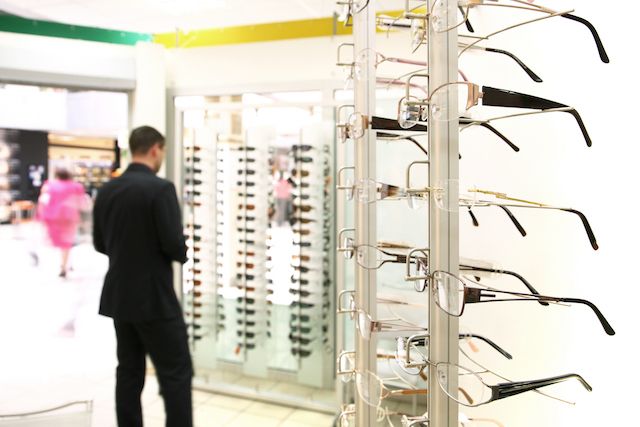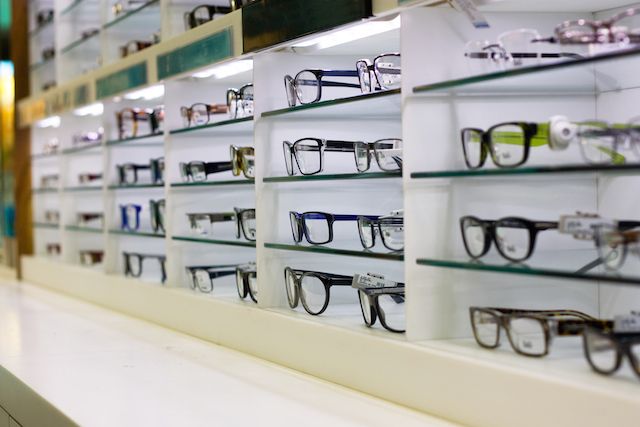Article
7 common lies you’ve been told about optical shops
Experts break down the most prevalent falsities ophthalmologists believe about dispensaries, and why believing them are seriously hurting practice revenue.


Optical dispensaries are fantastic profit centers for the eye care industry.
About 60% of an optometric office’s total revenue is from frame and eyeglass sales, according to Samantha Toth, ABOC, president of Innereactive Media.
Yet the majority of ophthalmologists fear adding optical shops to their practice.
Why is this?
Mary Walker, COE-director of operations for Vision Associate-and Carolyn Salvato-director of optical consulting at BSM Consulting-break down the 7 most common lies ophthalmologists have been told about optical shops, and explain why these false beliefs are hurting ophthalmic revenue.
Photo credit: ©Michaelpuche/Shutterstock.com



7. I won’t get any more OD referrals if I open my own dispensary.
Mary Walker (MW): Though it’s true that ophthalmologists opening an optical dispensary in their practice need to then make sure any co-managed patients return to their primary optometrist for eyewear, owning a dispensary does not eliminate OD referrals.
This is especially true if the optometrists with whom you’ve already established such a symbiotic relationship continue to see their customers return to them for eyewear despite your new dispensary. Like any mutually beneficial business relationship, it’s a matter of establishing and maintaining trust.
Carolyn Salvato (CS): Ophthalmology practices often fear that optometrists will be hesitant to refer patients if the practice offers optical services. Historically this has not been the case. If the practice is diligent in recommending the patients return to the optometrist for any eyewear needs and are proactively following-up with the OD in a timely manner, the majority of optometrists will continue to refer.
Photo credit: ©Ikonoklast/Shutterstock.com



6. Our optical can’t compete with the budget chains.
MW: Ophthalmology practices with dispensaries can set themselves apart with quality, which doesn’t always have to signal expensive. It’s easy to offer a budget option that is also quality. Also, there is a misconception that everyone at the discount stores gets glasses for $69.00. In fact, the average sale at “discount” optical retailers is often higher than at most ophthalmology practices, with the low-low offers little more than a means of getting patients in the door.
Ophthalmologists with dispensaries have the benefit of already having their customers’ in the door in the form of their eyecare patients.
CS: Patients perceive that private practice opticals are more expensive than the retail chains yet most patients believe they will receive a higher quality pair of glasses if they purchase from their doctors office. Private optical dispensaries have access to numerous vendors that offer inexpensive product lines that can be sold at a lower, more competitive price. Careful purchasing and negotiating special pricing with your lab can provide an optical the opportunity to offer a competitively priced eyeglass package that is both profitable and enticing to the patient.
Photo credit: ©maxriesgo/Shutterstock.com



5. I won’t earn enough money in optical to make it worth my time.
MW: This one might be the biggest misconception of all. First of all, for most ophthalmologists, practically no time at all will be directly invested in the dispensary. For them, optical dispensaries represent “passive income,” meaning physicians do not have to work directly with the patient to derive income so long as the dispensary is properly managed.
And that’s a point of emphasis: properly managed. Too many ophthalmology practices with dispensaries are too willing to leave “well enough alone” with a modestly profitable dispensary, when in fact that are wide pathways to improve conversion rates and streamline inventory management and, therefore, to increase profits.
For example, optical dispensary management firms (ODMs) offer turnkey, customizable optical dispensary management and consulting services that allow eye care practices to maintain ownership and control of their dispensaries while relieving them of the time and effort involved in their everyday operation-all while increasing profitability.
ODMs can work with eye care practices across the country on “win-win” operations solutions that save time and grow profits.
CS: Vision plans will generally require accepting a lower level of reimbursement however, joining some of the national plans has become a necessity. Careful assessment of each plans reimbursement rates and how goods costs impact profitability will help in determining if a specific vision plan is a good fit for the practice. With the exception of plans that provide only a dispensing reimbursement and minimal opportunity to upsell, most national plans can be a profitable addition to optical. Vision plans can also be instrumental in introducing a younger clientele into the practice.
Photo credit: ©PhotoHouse/Shutterstock.com



4. Selling high-end, exclusive lines results in higher profits.
CS: Many practices believe that offering unique frame lines that are considered high-end and exclusive will generate higher sales and therefore provide greater profitability. Frames lines that are considered “exclusive” often have a no-return policy or 3 for one exchange policy. Many of these same companies require using their MSRP which is often considerably lower than the standard mark-up multiple used by most practices. With minimal ability to exchange frames that are not selling, the optical must then implement a price reduction to deplete old product. In doing so, many times the optical is simply recovering the initial cost of the frame and therefore generating no profit. It has been proven that working with vendors that offer a wide range of price points and reasonable exchange policies provides the optical business greater flexibility if a frame style or line is not selling.
Photo credit: ©Goodluz/Shutterstock.com



3. More frames displayed in optical means more sales.
CS: The number of frames displayed in an optical should be consistent with the volume capabilities of the business. Offering an excessive number of frames with lower patient volume levels will result in large quantities of stale products, and disproportionate and needless expenses. Quantifying the inventory levels based on projected and actual patient volume will improve the opticals profitability.
Photo credit: ©Michaelpuche@Shutterstock.com



2. Employing a skilled optician to manage optical will ensure success.
CS: Doctors often hire managers with many years of optical training and assume, due to years of exposure in the industry, that they will naturally have the financial acumen necessary for managing this business. Not all long-term opticians have the necessary skills to assess the financial performance of an optical. Financial assessment skills include the ability to analyze goods costs, set retail prices that provide adequate margins of profit, negotiating discounts with vendors, and determining realistic staffing requirements to ensure exceptional service yet still affordable for the business. Finding a manager that has financial management experience can be difficult so acquiring additional training for a potential or existing manager may be necessary.
Photo credit: ©Doodluz/Shutterstock.com


1. Build it and they will come.
CS: Internal promotion is essential part of nurturing and growing this service. Establishing referral protocols for all staff members, and requiring periodic staff trainings to review the benefits of new lens and frame technologies are all ways to enhance internal support.
Photo credit: ©VannPhotograph/Shutterstock.com
Newsletter
Don’t miss out—get Ophthalmology Times updates on the latest clinical advancements and expert interviews, straight to your inbox.




